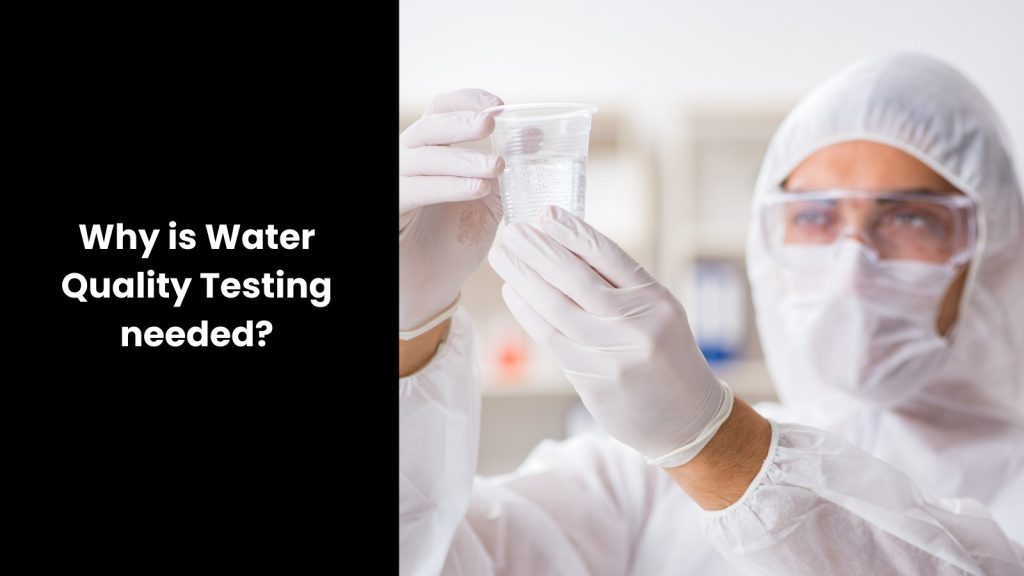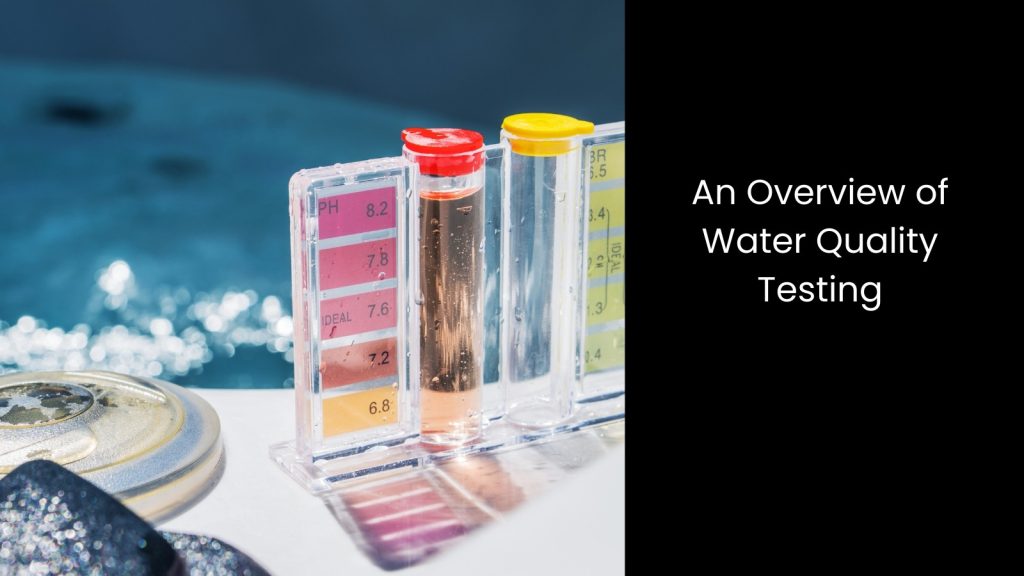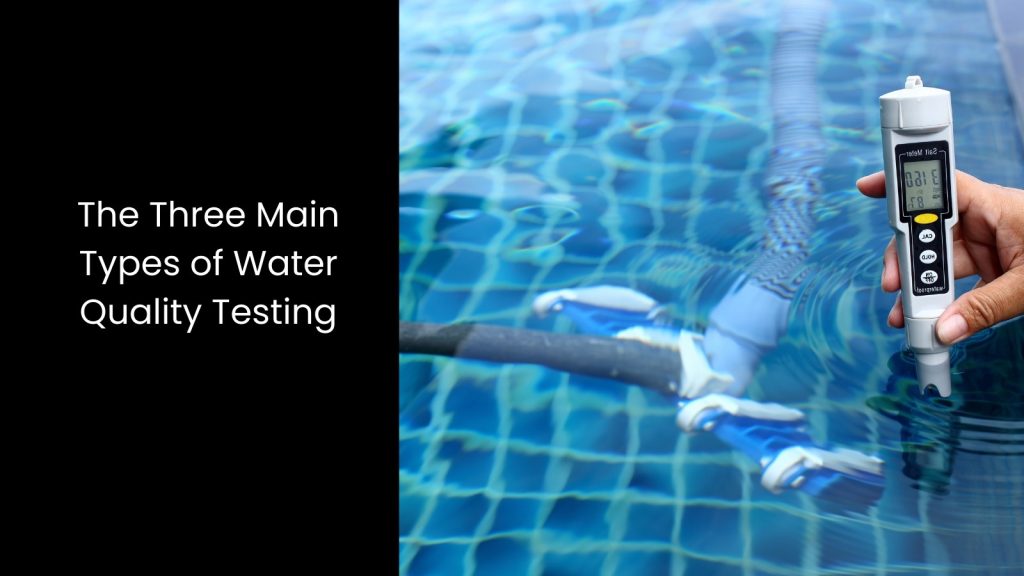Did you know that despite significant advancements in technology and infrastructure, global water quality remains a pressing concern? Yes, it is a commonly known factor that contaminated water can lead to severe health issues and environmental damage. This makes the need for accurate testing more critical than ever. How can the water industry in Australia solve this challenge? However, it is necessary to understand the different types of water quality if you need to tackle this challenge.
This is why we reveal the three main types of water quality testing in the water industry in Australia in this article.
This is why we reveal the three main types of water quality testing in the water industry in Australia in this article.
Why is Water Quality Testing needed?

- We must understand why it is necessary for the water industry in the first place.
- The prime reason for this is that the water we use daily, whether for drinking, agriculture, or business, may not always be safe. The reports from around the world highlight how poor water quality across the globe is lowering the economic potential of regions with heavy pollution, and it emphasises that a hidden water quality crisis endangers both human and environmental health.
- Did you know that not just one or a few but several factors contribute to this problem? This includes human activities and natural events like climate change, climate-related issues, such as floods, runoff from agricultural activities, and industrial activities that release heavy metals and hazardous chemicals such as sodium bicarbonate, iron, zinc, carbon dioxide, sulphate, chloride, and fluoride into rivers and lakes, making the water even more dangerous.
- If people consume this contaminated water, it will pose serious health risks and will lead to illnesses and, in some cases, conditions like aquagenic urticaria, an allergic reaction to water. This is why the water industry needs to test and treat water before distributing it to the general public.
An Overview of Water Quality Testing

- You already know this will help determine if drinking water is safe for human consumption.
- Water quality depends on its composition, which is influenced by natural processes and human activities. Experts in the water industry usually assess water quality through physical, chemical, and microbiological parameters. If these values exceed safe limits, which organisations like the World Health Organisation (WHO) and Centres for Disease Control (CDC) set, human health can be at risk.
- A common misconception is that clear water means it is of good quality, yet harmful substances can still be there in the water.
- However, when testing water regularly, you can track changes over time, providing important data about water conditions. Water quality tests often measure aspects like temperature, pH levels, turbidity, salinity, and the presence of nitrates and phosphates. These tests help you understand the safety of water, which comes from sources like groundwater, surface water, and rainwater.
- You know water constantly moves through the earth, picking up different substances as it goes, which affects its quality. Natural processes, like water flowing through rocks, can introduce contaminants, but human activities such as dumping waste, poor farming practices, and chemical spills also pollute water. It is a certain fact that safe drinking water needs to be free from pathogens like bacteria, viruses, protozoa, and worms. It also must have low levels of harmful chemicals and remain clear and tasteless for aesthetic reasons. Among the various concerns, microbiological contamination stands out because it causes most illnesses and deaths linked to unsafe drinking water.
- This is why water quality testing has become a crucial step in ensuring the safety and sustainability of water, especially as Australia faces challenges like climate change, growing populations, and pollution.
The Three Main Types of Water Quality Testing

Bacteria Tests
Did you know that bacterial contaminants can pose serious health risks?
One of the most common and dangerous bacteria found in water is E. coli, which originates from faecal contamination. When people consume water contaminated with E. coli, it can lead to severe health problems such as gastrointestinal infections, diarrhoea, and even kidney failure in extreme cases. This bacteria comes from faecal matter, which can enter water sources through sewage leaks, agricultural runoff, or improper waste disposal, which are very common circumstances in Australia.
Regular bacteria testing is vital in determining whether water is safe for consumption or even for skin contact, as harmful bacteria can also lead to skin irritations and infections. These tests are particularly important because bacteria like E. coli are invisible to the naked eye, and clear-looking water may still be highly contaminated. Therefore, simply judging water by its appearance is not enough. Comprehensive testing ensures that water meets safety standards and reduces the risk of waterborne diseases.
In addition to E. coli, bacteria tests check for other pathogens like Salmonella, Legionella, and Vibrio cholerae, all of which can cause severe health issues if present in drinking or bathing water. Conducting these tests is essential in public health efforts, especially in areas where water sources are vulnerable to contamination from human and animal waste.
One of the most common and dangerous bacteria found in water is E. coli, which originates from faecal contamination. When people consume water contaminated with E. coli, it can lead to severe health problems such as gastrointestinal infections, diarrhoea, and even kidney failure in extreme cases. This bacteria comes from faecal matter, which can enter water sources through sewage leaks, agricultural runoff, or improper waste disposal, which are very common circumstances in Australia.
Regular bacteria testing is vital in determining whether water is safe for consumption or even for skin contact, as harmful bacteria can also lead to skin irritations and infections. These tests are particularly important because bacteria like E. coli are invisible to the naked eye, and clear-looking water may still be highly contaminated. Therefore, simply judging water by its appearance is not enough. Comprehensive testing ensures that water meets safety standards and reduces the risk of waterborne diseases.
In addition to E. coli, bacteria tests check for other pathogens like Salmonella, Legionella, and Vibrio cholerae, all of which can cause severe health issues if present in drinking or bathing water. Conducting these tests is essential in public health efforts, especially in areas where water sources are vulnerable to contamination from human and animal waste.
Mineral Tests
Mineral tests are a key component of water quality testing, and the reason is so obvious.
They help identify the presence and levels of various minerals in the water.
Water can contain a wide range of minerals, and testing for them should receive priority because certain minerals can be harmful at high levels or when mixed with other substances. There are several common mineral tests. It includes checking for chlorine and chloride, nitrate and nitrite, lead, copper, iron, zinc, potassium, and sodium.
It is indeed a problem, as these minerals can come from natural sources like soil and rock or from human activities such as agriculture, industrial processes, or the use of certain chemicals in water treatment. Each region in Australia has its own unique mineral composition, so water from different areas can vary significantly in mineral content.
For example, water from areas with heavy agricultural activity, such as Lockyer Valley, may contain higher levels of nitrates due to fertiliser runoff, while industrial zones may have elevated levels of lead or copper. This is where the mineral testing provides important information on the specific mineral content of the water, which helps determine what kind of treatment is needed to purify it.
They help identify the presence and levels of various minerals in the water.
Water can contain a wide range of minerals, and testing for them should receive priority because certain minerals can be harmful at high levels or when mixed with other substances. There are several common mineral tests. It includes checking for chlorine and chloride, nitrate and nitrite, lead, copper, iron, zinc, potassium, and sodium.
It is indeed a problem, as these minerals can come from natural sources like soil and rock or from human activities such as agriculture, industrial processes, or the use of certain chemicals in water treatment. Each region in Australia has its own unique mineral composition, so water from different areas can vary significantly in mineral content.
For example, water from areas with heavy agricultural activity, such as Lockyer Valley, may contain higher levels of nitrates due to fertiliser runoff, while industrial zones may have elevated levels of lead or copper. This is where the mineral testing provides important information on the specific mineral content of the water, which helps determine what kind of treatment is needed to purify it.
pH Testing
pH testing is another crucial aspect of water quality testing. This is due to its ability to measure how acidic or alkaline the water is.
Let us clarify this a bit more. The pH scale runs from 0 to 14, with 7 being neutral. Anything below 7 indicates acidity, while values above 7 show alkalinity.
pH measures the concentration of hydrogen ions in water. The higher the concentration, the more acidic the water becomes. Acidity does not just affect the taste of water; it can also impact health. Water that is too acidic or too alkaline can harm the body and lead to various health issues. Acidic water, for instance, can corrode pipes, releasing harmful metals like lead and copper into the drinking water, which can cause serious health problems.
pH testing helps determine whether water is safe to drink or use in daily activities. Public health agencies recommend a pH range of 6.5 to 8.5 for drinking water, as this range is generally considered safe for human consumption and minimises risks of corrosion in pipes and plumbing systems.
Let us clarify this a bit more. The pH scale runs from 0 to 14, with 7 being neutral. Anything below 7 indicates acidity, while values above 7 show alkalinity.
pH measures the concentration of hydrogen ions in water. The higher the concentration, the more acidic the water becomes. Acidity does not just affect the taste of water; it can also impact health. Water that is too acidic or too alkaline can harm the body and lead to various health issues. Acidic water, for instance, can corrode pipes, releasing harmful metals like lead and copper into the drinking water, which can cause serious health problems.
pH testing helps determine whether water is safe to drink or use in daily activities. Public health agencies recommend a pH range of 6.5 to 8.5 for drinking water, as this range is generally considered safe for human consumption and minimises risks of corrosion in pipes and plumbing systems.
Conducting Water Quality Testings through Robust Technologies

If you wonder how to fulfil your water plant’s water quality concerns, integrating sophisticated technologies into water quality testing is undoubtedly the most suitable way to do this. Advanced systems deliver detailed insights and enhance decision-making. Investing in a reliable water asset management solution will not make you disappointed. However, you need to collaborate with an industry expert to receive the best.







